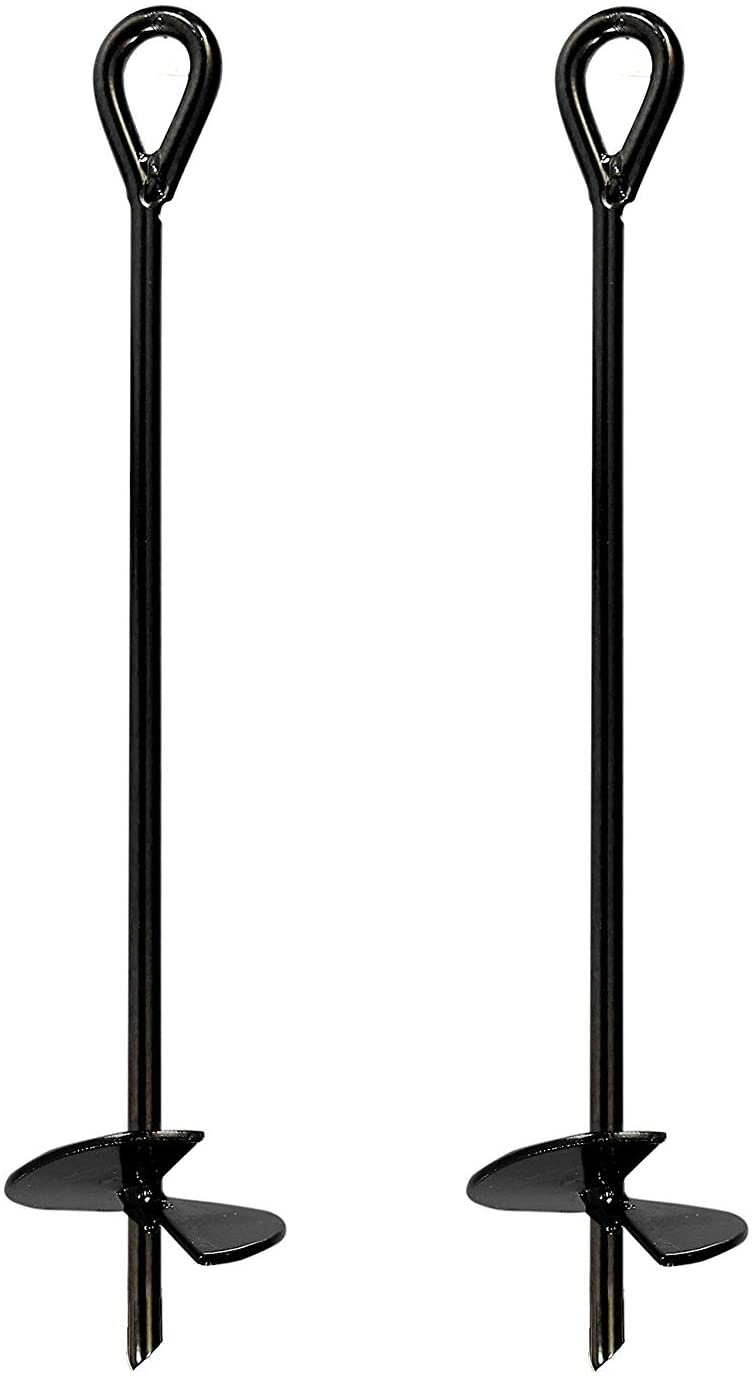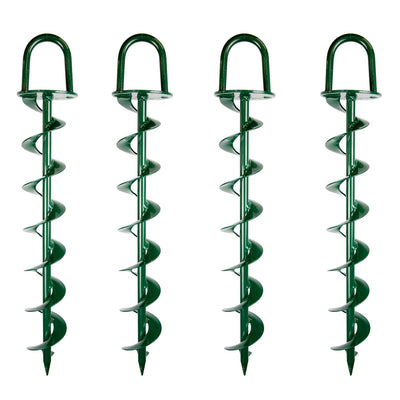The Benefits of Getting a High-Quality Ground Anchor for Security
The Benefits of Getting a High-Quality Ground Anchor for Security
Blog Article
Explore the Different Types of Ground Support for Your Next Job
When getting started on a construction or landscaping task, understanding the different kinds of ground supports offered is crucial to making sure both stability and durability (Ground Anchor). From auger anchors, which master diverse soil conditions, to stake supports developed for short-term setups, the choices are numerous. Additionally, concrete and screw supports present one-of-a-kind benefits in particular circumstances, while deadman supports are tailored for applications calling for resistance to side pressures. The option of a proper anchor type can significantly affect the general success of your job, motivating further expedition into their respective benefits and applications.

Auger Anchors
Auger supports are a prominent choice in different construction and landscape design projects because of their one-of-a-kind style and reliable securing capabilities. These anchors are composed of a helical screw-like shaft that is driven into the ground, enabling for a steady and secure hold. The spiral design facilitates simple installment and makes best use of resistance against lateral forces, making auger supports especially reliable in applications such as fence, short-term frameworks, and erosion control.
The installation procedure of auger supports is relatively simple. Auger supports can be conveniently gotten rid of and reused, which adds to their cost-effectiveness and sustainability.
One of the considerable advantages of auger supports is their capability to distribute lots equally across the bordering dirt, lowering the risk of soil disturbance and reducing ecological impact. Additionally, they are less at risk to heaving or loosening up in time compared to standard securing methods. Auger anchors are a superb selection for jobs needing trustworthy and durable anchoring remedies.

Stake Anchors
When it concerns protecting structures in a selection of outside applications, stake supports supply a dependable and straightforward remedy. These anchors are usually built from resilient materials such as steel or aluminum, made to stand up to environmental stress and anxieties while providing ideal stability. Their basic style permits fast installment, making them an optimal option for short-lived or long-term anchoring demands.
Stake anchors are particularly valuable in safeguarding outdoors tents, canopies, and other light-weight frameworks against wind and weather. They function by being driven into the ground at an angle, developing a solid hold that stands up to pull-out pressures - Ground Anchor. The efficiency of stake anchors depends on a number of elements, including soil type, wetness material, and the angle of installation
For included security, several risk supports feature attachment points for ropes or bands, enabling tension changes as necessary. In applications such as landscape design or building and construction, they can effectively support devices or structures on unequal terrain. On the whole, risk supports provide a cost-efficient and functional solution for securing numerous outdoor installations, making them a favored selection for contractors and do it yourself fanatics alike.
Concrete Anchors
Concrete supports give a robust option for protecting structures to concrete surfaces, guaranteeing stability and safety and security in various applications. These anchors are important for jobs ranging from property buildings to large industrial installments. They are available in various types, consisting of expansion anchors, adhesive anchors, and undercut supports, each created for particular lots requirements and environmental problems.
When set up,Expansion supports count on mechanical mechanisms to hold the concrete. They are optimal for medium to sturdy applications. Glue supports utilize high-strength epoxy or resin to bond the anchor to the concrete, supplying premium load-bearing capacities, especially in broken concrete scenarios. Undercut anchors produce a distinct shape within the concrete, supplying exceptional holding power, especially in applications where tensile tons are prevalent.
When performed correctly, concrete supports dramatically improve the structural stability of different jobs, making them crucial in modern-day building and construction methods. Understanding the certain needs of your task will aid in picking the ideal kind of concrete anchor for the task.
Screw Anchors

Screw supports are a functional securing option that can be efficiently employed in a variety of applications where traditional concrete anchors might not be enough. These anchors contain a helical layout that allows them to be quickly driven right into the ground, making them excellent for use in soil and various other substratums. Their distinct framework gives exceptional holding power and resistance to pull-out forces, visit this page making them ideal for many jobs, from landscaping to structural support.
Among the key benefits of screw anchors is their ease of setup. They call for marginal equipment and can commonly be set up without the need for excavation, which conserves both time and labor expenses. In addition, screw anchors can be gotten rid of and reused, offering a sustainable option for momentary applications.
Screw anchors are particularly advantageous in locations where dirt conditions are challenging, such as loose or sandy dirts. Their capacity to be mounted at differing depths permits for modification based upon specific task requirements. In general, screw anchors supply a reliable and reliable securing approach, making them a superb selection for engineers and service providers looking for effective services for their projects.
Deadman Anchors
Deadman supports act as a durable service for stabilizing structures in challenging conditions, especially where typical securing approaches might fail. These anchors consist of big, heavy objects buried underground, which produce resistance versus side pressures. The layout generally entails a horizontal element, such as a block of concrete or a steel plate, hidden in the soil, to which cables or straps are attached.
The performance of deadman supports hinges on their ability to distribute tons over find more information a larger location, minimizing the risk of failing in unsteady soil conditions. They are particularly valuable in applications such as retaining walls, short-term structures, and slope stabilization, where soil motion can compromise the honesty of the framework.
Installment of deadman supports calls for careful preparation to ensure they are placed at the right deepness and alignment, optimizing their load-bearing ability. While visit this web-site they may call for more labor and material than lightweight supports, their dependability in negative conditions makes them very useful for lasting tasks. Deadman anchors are flexible and can be adapted to different applications, making them a best option for designers facing distinct difficulties in their tasks.
Verdict
In recap, picking the appropriate sort of ground anchor is important for guaranteeing security and safety in various tasks. Auger supports stand out in diverse dirt conditions, while stake supports match short-term applications. For concrete surface areas, growth and sticky anchors supply reliable options, and screw supports use flexibility in tough terrains. Deadman anchors are especially reliable in standing up to lateral pressures for maintaining wall surfaces. Cautious consideration of these options will certainly boost job results and architectural integrity.
Additionally, concrete and screw supports present distinct advantages in particular scenarios, while deadman supports are tailored for applications requiring resistance to lateral forces - Ground Anchor.Auger anchors are a popular selection in numerous building and landscape design tasks due to their special style and effective anchoring capacities. They come in different kinds, including development anchors, sticky anchors, and undercut supports, each designed for particular load requirements and ecological problems
Sticky anchors make use of high-strength epoxy or material to bond the anchor to the concrete, supplying remarkable load-bearing capabilities, particularly in fractured concrete scenarios. On the whole, screw anchors provide a reliable and efficient anchoring approach, making them a superb choice for designers and specialists seeking effective solutions for their jobs.
Report this page